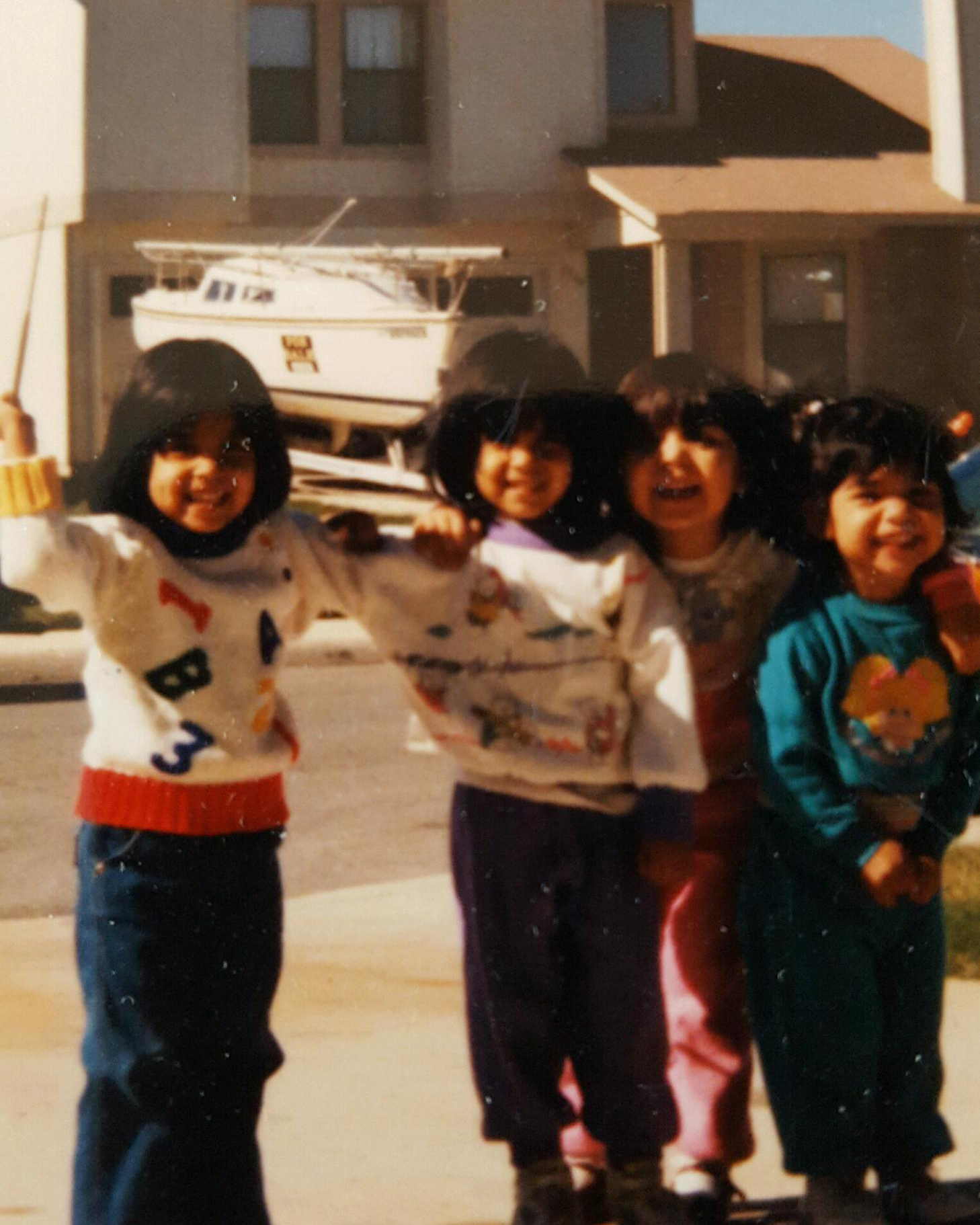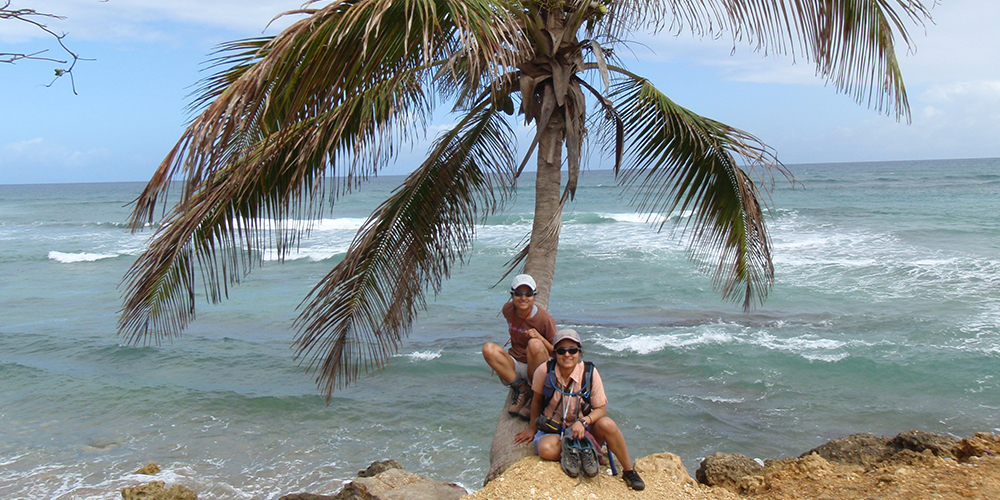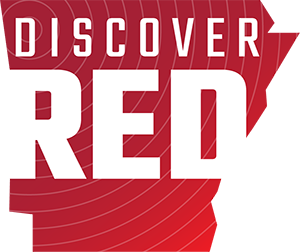Twin Sisters Discover a New Species of Dinosaur: Geminiraptor Suarezarum
In the summer of 2004, Celina and Marina Suarez were hiking over rocks and through washes in the sun-blasted desert of Utah’s Cedar Mountain Formation, an area in the eastern part of the state rich with dinosaur fossils.
They were both doing research for master’s degrees, working toward their shared goal of becoming paleontologists. Celina was interested in geochemical analysis of dinosaur bones. Marina studied rock formations to better understand paleoclimatology and landscape.
Celina, now an assistant professor of geosciences at the University of Arkansas, took a break from digging in nearby Crystal Geyser Dinosaur Quarry to help Marina identify and map rocks.
They’d hiked about a mile and a half from the quarry in triple-digit heat when they came across a gulley, always of interest to a paleontologist because of the layers of exposed rock. It was 6- to 10-feet deep and steep at one end. Marina scooted down the steep end, which is a bit out of character because Celina is typically the more daring of the two. Then she started shouting. “She saw the bones coming out of the side of the hill,” Celina recalled. “She was like, ‘Holy crap! Jackpot.’”
What they found was an undiscovered fossil bed from the Lower Cretaceous period — roughly 120 million years ago — filled with bones that had probably washed into the gulley and fossilized.
Like good paleontologists in training, the grad-student sisters stabilized the exposed fossils with thin glue they carried in their backpacks. Then they went back to camp and returned the next day when the light was more conducive to picking out fossils from the surrounding rock.
Being, in all likelihood, the first humans to set eyes on the site was thrilling in itself. But it was six years later that the Suarez sisters got the really exciting news: The bed yielded a new species of dinosaur, the oldest known troodontid in North America. (Picture the bird-like raptors from Jurassic Park movies only with a smaller head and smaller teeth.) The scientists who taxonomically confirmed the discovery adhered to tradition and named it in honor of the discoverers: Geminiraptor Suarezarum. “Geminae” is Latin for “twins,” “raptor” refers to a small meat-eating dinosaur, and “Suarezarum,” of course, refers to their surname.
“It’s a dinosaur nerd’s dream,” Marina said.
In the years since the discovery, both sisters have gone on to careers in paleontology. Marina is an assistant professor of geological sciences at the University of Texas at San Antonio. Their appointments at universities in different states are one of the few times in their lives they’ve been apart.

As young paleontologists in training, the twins, left, would often come home with rocks and fossils in their pockets.
Growing a Love of Science
Dinosaur nerdom started early for the Suarez sisters. As kids they dug holes in their San Antonio backyard, came home with rocks and fossils in their pockets, and dreamed of the high adventure a career spent digging up the past would surely bring.
“We were always picking up stuff outside. We were closer to the ground than most and we noticed things more,” said Marina, the younger sibling by two minutes, with a laugh. (They are both under 5 feet tall.)
Their mom was a teacher and had summers off, so they spent a lot of time on hikes, at the botanical gardens or the zoo, trips that developed the twins’ love of science. They came home with rocks stuffed in their pockets to add to the growing collection at home. Marina recalls a second-grade science lesson on dinosaurs that sealed the deal for her.
“I was hooked. They were cool looking,” she said. “The one I liked was triceratops. We had one in our local museum. Kids like cool-looking big things.”
Both sisters admit they were inspired by the world’s most famous fictional archaeologist.
“Even though it isn’t paleontology, I think we saw one too many Indiana Jones movies,” Celina said. “I thought, ‘Wow, if that’s what it’s like to be a professor than I want to be a professor. You get to do all this cool stuff and travel around.’”
High school brought the two a setback, however, in the form of a bad chemistry teacher. Both acquired a dislike of the subject that lasted until finding a way to connect the arcane nature of chemistry with something they loved: vertebrate paleontology. That’s a motivational lesson Celina still imparts to her students.
“When I teach my geochemistry class here I ask, ‘How many people hate chemistry?’” she said. “Half the hands go up. I tell them, ‘Don’t worry, I hated chemistry too.’ All you need to do is find something that is applied to what you like and that can sometimes break the ice as far as a mental block on a subject.”

Being scientists isn’t exactly like they’d envisioned as kids, but the Suarez sisters still get to have good times in the field.
The Future Past
Celina describes herself as a cross between a geochemist and a paleontologist. She works with trace elements and stable isotopes found in fossils to understand paleoclimatology. She’s particularly interested in the Mesozoic era, roughly 250 million years ago to 65 million years ago, which included time periods when both carbon dioxide levels and temperatures were higher than today. Researching prehistoric climates could provide a model for the affects that rising carbon dioxide levels and temperatures may have on future climates and species. Plus, the Mesozoic was thick with dinosaurs, a bonus for any lifelong dino fan.
Marina’s research is also centered on paleoclimatology as revealed through geochemistry. And she is also interested in time periods when the Earth was much warmer, such as the mid-Cretaceous and the Paleocene-Eocene. She tends to focus on rocks and soil, and studies different slices of geologic time than her twin. “They are different sets of tools we use to answer questions about environments,” she said.
It’s the kind of work they dreamed of as kids, even if it isn’t quite the stuff of Temple of Doom.
“There is a little less of the gun and whip toting and it is a lot more scientific,” Marina said. “But it’s still adventurous and you have interesting times in the field.”



